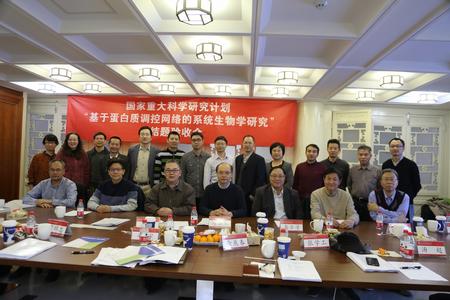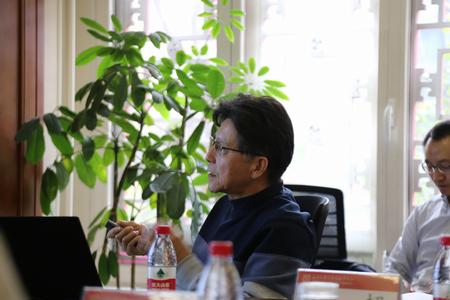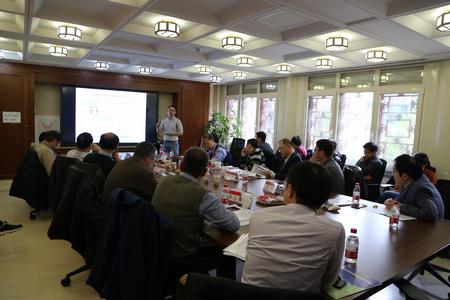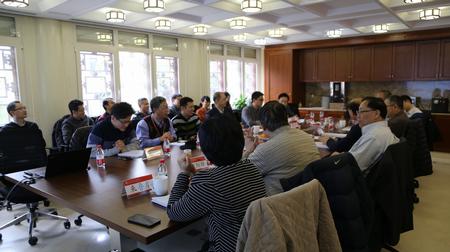On November 16, 2019, the meeting of the National Key Scientific Research Project "Systematic Biology Research Based on Protein Regulatory Networks" was held in Jingyuan Courtyard #1 at Peking University. The experts invited at the meeting were: Chen Luonan, Shanghai Institute of Life Sciences, Chinese Academy of Sciences; Shanghai Yimin Li Research Center; Lei Jinzhi, Li Shao, Zhang Xuegong, Tsinghua University; Tu Zhanchun, Beijing Normal University; Fu Yu, Institute of Microbiology, Chinese Academy of Sciences; Du Lilin; Ouyang Qi, Peking University, Lin Yihan, Wei Yu. More than ten young experts and scholars who participated in this project also participated.

The group photo of experts after the meeting
First, the general manager of the project, Professor Tang Chao, introduced the project, which carried out systems biology research around protein regulatory networks to understand the operating rules of life systems as a whole, using experiments and computational simulations to study the basic structure, design principles, and network dynamics of complex biological networks. By understanding complex disease networks, effective interventions for complex diseases can be discovered.

Professor Tang Chao introducing the overall situation of the project
This project set up a total of four topics, including "Design Principles in Bioregulatory Networks" "Information Processing Mechanisms in Biosignaling Transduction Networks", "Construction of Disease-Related Biomolecular Networks, Dynamic Evolution and Regulation Laws", "Disease Network Kinetic intervention and drug design." It consists of three interdisciplinary research centers related to systems biology (Center for Quantitative Biology, Peking University, Center for Computing and Systems Biology, Institute of Biophysics, Chinese Academy of Sciences, Shanghai Center for Drug Design and Discovery, Chinese Academy of Sciences) and three national key laboratories (Molecular Dynamics and Stability State Key Laboratory of Morphological Structure, State Key Laboratory of New Drug Research, State Key Laboratory of Biomacromolecules) participated.
The heads of the four research groups, Tang Chao, Wei Ping, Deng Minghua, and Liu Hong, introduced the status of the respective topics, the scientific problems solved, and personnel training.

Professor Wei Ping introducing the research work
Since the establishment of the project, more than 100 high-level papers have been published in international scientific journals. A non-equilibrium dynamic model of calcium oscillation in islet beta cells used to obtain theoretical predictions, and small molecule network intervention experiments were carried out to test the mathematical model. A model of tumor lipid metabolism network was completed and improved and the model was verified experimentally. It fully revealed the dynamic changes of the molecular network of pancreatic islet tissue and its relationship with the disease phenotype during the onset of diabetes. A new mechanism of type 2 diabetes risk factor hyperlipidemia inhibited the translation of insulin protein by affecting the phosphorylation of RNA binding protein DDX1. Discovered the resonance frequency phenomenon of the adaptive network; developed the artificial design method of the biological oscillating network, revealed the design principles of quantitative properties such as waveforms; developed the disordered protein drugability theory and calculation analysis method, obtained in c-Myc and p53 systems Highly active inhibitors, and achieve the application of some results transformation.

The experts discussing the results of the project
After hearing the report of the four project leaders, the external review panel questioned the heads of each subject and evaluated the level and innovation of the research results. In the end, the review panel believed that each subject had made good progress and achieved remarkable results, and agreed that all subjects passed the acceptance test.